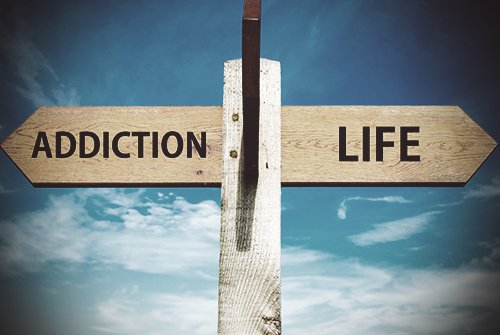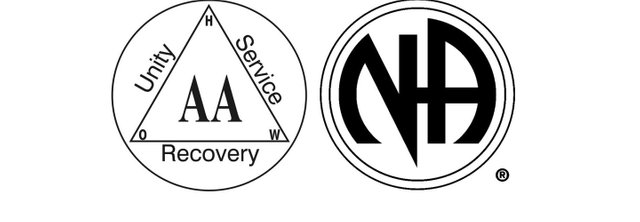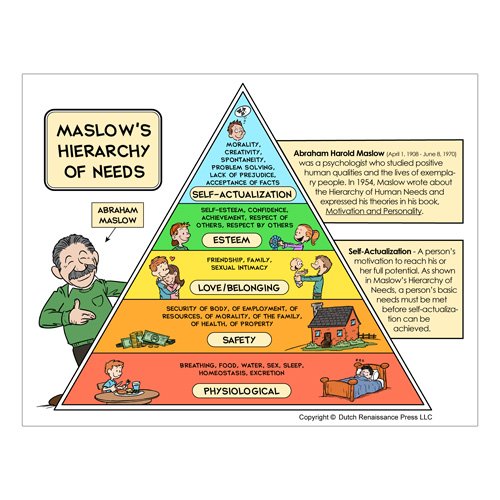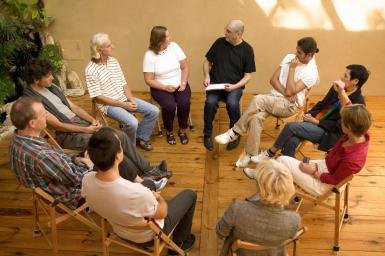“The Opposite of Addiction is Not Sobriety; The Opposite of Addiction is Connection”
This is a research paper I had written a little while back. I know its not really blog post ready, yet I think its very valuable information. It is written like a research paper with all relevant sources, which isn't necessarily a bad thing for those who might want to look further into the research. I hope it's helpful to anyone interested in psychology and addiction.

Addiction has been largely misdiagnosed and mistreated by the medical model; this is because addiction is not a disease. To clarify, addiction surely has a medical component, that may need treatment through pharmaceutical and chemical means. However, this method of treating addiction solely as a disease has led to a decline in the advancement of treating the psychosocial side of the issue (Treatment statistics 2011). The behavioral issues associated with addiction, like the rewiring of rewards circuitry in the brain, or the compulsive and obsessive nature of the disease, need to be treated before a person can get back to the routine of a normal life. Removing the biochemical aspect of the disease does not cure it, therefore, “The opposite of addiction is not sobriety. The opposite of addiction is connection” (TED-Johann Hari 2015). The loose prescription of maintenance drugs does not solve anything in the addict’s life besides the immediate physical ailment. Furthermore, the incarceration, isolation, and neglect, that are all too common for addicts, keep them tied down to this cycle as it further impedes the treatment of the psychosocial aspect of the illness. Due to the underlying psychological conditions that may lead to, or exacerbate substance abuse and use, addiction cannot be treated solely through the medical model; the research done by Kendler, Gardner, & Prescott (1997), or Gossop, Stewart, & Marsden (2008) all point to the need for reconnecting the individual to society and allowing them to lead self-actualized and fulfilling lives.

Programs like Narcotics Anonymous, and Alcoholics Anonymous, are admittedly not anywhere near perfect; however, they are vastly more successful when compared to inpatient rehabilitation that does not introduce the addict to such 12-step programs. In treatment centers that offered voluntary group treatment, Moos & King (1997), studied the relation among those attending group and individual psychotherapy sessions, and those who did not. Their findings show that those who participated in those forms of treatment, had significantly better outcomes. It is a fact that rehabilitation centers are failing to keep addicts clean and sober, at alarming rates. However, the same statistics show that programs like NA/AA produce much more successful outcomes than inpatient programs (Moos & King 1997). The researchers also offered suggestions on how to boost motivation and involvement in these treatment sessions; these range from incentivized motivation, to mandatory attendance of a minimum number of sessions weekly.
These improved outcomes of NA/AA attendees, suggest that the effectiveness of existing treatment services may be improved by initiatives that lead to increased involvement and engagement with such groups, starting from within an inpatient program. As statically outlined in Gossop, Stewart, & Marsden (2008), rehab programs that introduce patients to such groups while under their care, prove to be more effective than proprietary rehabilitation centers. These programs are successful because they offer addicts more than just medical help and forced abstinence through incarceration or hospitalization. These programs offer a level of connectedness that is necessary to heal the other aspects of addiction. The idea of addicts helping other addicts gives the individual a level of fulfillment that is so crucially needed by someone under the circumstances. People with substance issues may have more purpose in life as recovering addicts, than they had before they ever started using drugs. This work and involvement allows a person suffering from this issue, to achieve and lead a self-actualized existence.

Another aspect that positively affects addiction treatment, is level of religious devotion. As long as it is not extreme conservatism, religious devotion has shown to help people cope with stress (Kendler, Gardner, & Prescott 1997). Many addicts are led down this path because of stressors and events in their lives which they were unable to deal with in a healthy manner. The study claims that religious belief may lower the occurrence of addiction in a population, most likely due to the coping mechanisms learned by their spiritual involvement. A psychological approach, involving therapies like emotive rational behavior therapy, is structured on the ability of the patient to learn ways to cope with their environment, without turning to a chemical fix; religious devotion instills different, yet equally effective, coping methods in the individual in its own therapeutic manner. Not only has this aspect shown to prevent the occurrence of substance abuse, but it has shown to effectively aid recovering addicts in staying clean and sober. Kendler, Gardner, and Prescott (1997) found that addicts who join religious organizations, or even just NA/AA, programs, which require the individual to recognize and submit to a power greater than themselves, have statistically been more successful in their recovery than those who do not. The study shows that these individuals build a level of hardiness through their newfound coping skills, that keep them resilient; those addicts not only had a better rate of achieving sobriety, but staying sober for the entirety of the five-year study. It is stated clearly in step two that the addict “Came to believe that a power greater than [themselves] could restore [them] to sanity” (AA World Services Inc 2016). This sort of world view is likely to be beneficial due to the stress relieving properties of understanding the limitations of humanity, and the hope and belief that there is a force in existence, without those limitations.
Another aspect other than the medicine, that plays a large role in an addict’s situation, is the basic needs of food and shelter. Programs that aim to treat other aspects of addiction before the medical aspect, have shown to be successful so far. Padgett, Gulcur, & Tsemberis, (2006) claim that it is actually more beneficial to the patient if they are aided in meeting their socioeconomic needs first, and then their medical needs. The research focused on the success rate of housing first programs versus treatment first ones. Such programs offer shelter in order to treat the more basic needs of the individual first. The rationale for this method is well rooted in Maslow’s hierarchy; it relies on his principle that humans need to have their basic biological, psychological, and social needs met in order for them to move on to any sort of fulfilling existence (Maslow 1943). Addicts have issues like housing and food needs, that very possibly may have sparked their addictions, or been sparked by their addictions and exacerbated due to the situation. Therefore, it is very logical to understand that such key underlying issues must be treated first, before any progress can be made on the issue as a whole. After 4 years, when the study ended, they found that of the total housing first clients studied, 75% of them were still successfully sober, while finding only a 50% sobriety rate amongst the treatment first clients. It is crucial to any treatment program, even one that is mostly based on the medical model, to aid and support the individual in fulfilling these basic needs first.

The field of addiction therapy needs to stop treating this disorder as solely a medical disease. There is some proof, that the medical ailment of the disease can be treated solely by treating the other crucial aspects first. This includes basic needs like food and shelter, as well as higher level needs like social involvement and meaningful relationships. The US spends $80 billion to “rehabilitate” and incarcerate drug users, while spending only 5% of that on actual treatment and rehabilitation (Picchi 2014). Most of the means outlined for reconnecting and aiding these individuals in leading fulfilling lives are free, or much less expensive than the current methods; it is much less expensive to house a drug user than to incarcerate them, at what the New York Times estimates at $168,000 yearly. Besides the cost to society, replacing pharmaceutical treatment and incarceration with psychological therapy has proven to be highly successful in getting addicts clean, and keeping them clean for longer. Whether it is group sessions like those used in 12-step programs, or individual sessions with a clinician, they are all much more effective than medical treatment alone. 12-step programs have now branched off with meetings for the family of addicts, giving them the same group therapy and intellectual skills that the addict learns, enabling the smooth and efficient communication between the two parties to develop naturally. Such forms of family therapy may be overlooked at times; however, the environment surrounding the individual clearly plays an immense role in their recovery, and must be treated along with the addict themselves.

The various types of treatment, whether they be group therapy, or housing first therapy, or religious based coping, clearly each have their own merits, and have each proven their success in their own way. However, for real change to occur, these treatments cannot be isolated; the standard of care for a substance abuse patient should involve all of these forms of intervention. The research falls short due to its inability to predict whether a combination of all these different therapies is truly viable or not. Another area of future study would involve a longitudinal study of the participants; though four or five years is substantial data, the nature of addiction requires more. Addiction is a chronic, and lifelong illness, and therefore, successes and failures of different treatments need to be measured on a lifelong scale.
When medicine treats addiction as solely a disease, and psychology treats it as solely a mental issue, and economics treats it as an unavoidable expense to society, no treatment truly advances. Implementation of group therapy based on the 12-step model, including the development and belief in a higher power, as well as needs first treatments like housing first, have shown to have positive outcomes and success at reconnecting the addict to society. However, the further development of addiction therapy relies on the ability to synergistically combine these many forms of treatments in order to give the patient the best possible prognosis.
I hope this paper was informative. The video that inspired me to write this paper from this perspective is below:
References
AA World Services Inc. (2016). The twelve steps of alcoholics anonymous. Retrieved from http://www.aa.org/assets/en_US/smf-121_en.pdf
Gossop, M., Stewart, D., & Marsden, J. (2008). Attendance at Narcotics Anonymous and Alcoholics Anonymous meetings, frequency of attendance and substance use outcomes after residential treatment for drug dependence: A 5‐year follow‐up study. Addiction, 103(1), 119-125.
Kendler, K. S., Gardner, C. O., & Prescott, C. A. (1997). Religion, psychopathology, and substance use and abuse: A multimeasure, genetic-epidemiologic study. American Journal of Psychiatry, 154(3), 322-329.
Maslow, A. H. (1943). A theory of human motivation. Psychological Review 50.4: 370-396. Web.
Moos, R. H., & King, M. J. (1997). Participation in community residential treatment and substance abuse patients' outcomes at discharge. Journal of Substance Abuse Treatment, 14(1), 71-80.
Padgett, D. K., Gulcur, L., & Tsemberis, S. (2006). Housing first services for people who are homeless with co-occurring serious mental illness and substance abuse. Research on Social Work Practice, 16(1), 74-83.
Picchi, A. (2014, May 8). The high price of incarceration in America. Retrieved November 14, 2016, from http://www.cbsnews.com/news/the-high-price-of-americas-incarceration-80-billion/
TED (2015, July 9). Everything you think you know about addiction is wrong | Johann Hari. Retrieved from https://www.youtube.com/watch?v=PY9DcIMGxMs
Treatment statistics. (2011). Retrieved December 8, 2016, from Nora’s Blog, https://www.drugabuse.gov/publications/drugfacts/treatment-statistics
Congratulations @thefeetofpete! You have completed some achievement on Steemit and have been rewarded with new badge(s) :
Click on any badge to view your own Board of Honor on SteemitBoard.
For more information about SteemitBoard, click here
If you no longer want to receive notifications, reply to this comment with the word
STOPCongratulations @thefeetofpete! You have completed some achievement on Steemit and have been rewarded with new badge(s) :
Click on any badge to view your own Board of Honor on SteemitBoard.
For more information about SteemitBoard, click here
If you no longer want to receive notifications, reply to this comment with the word
STOP